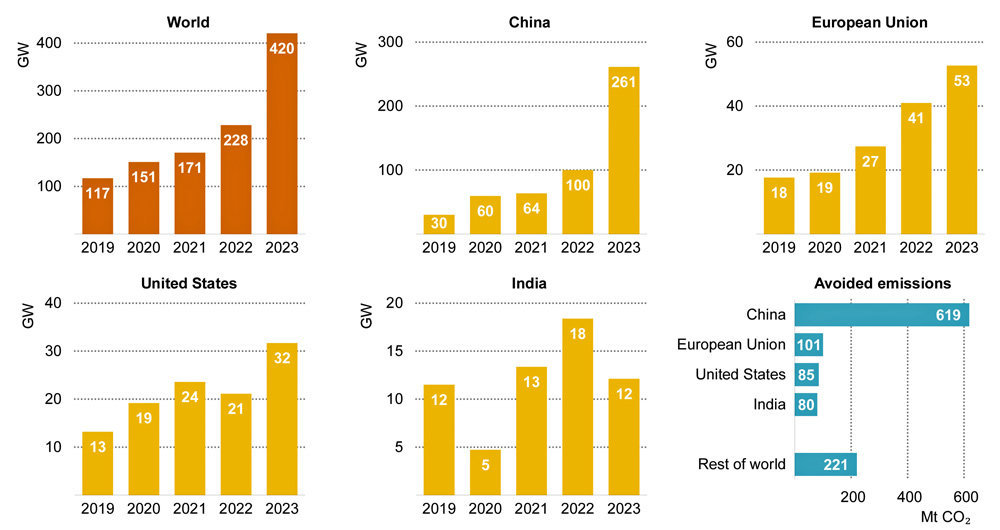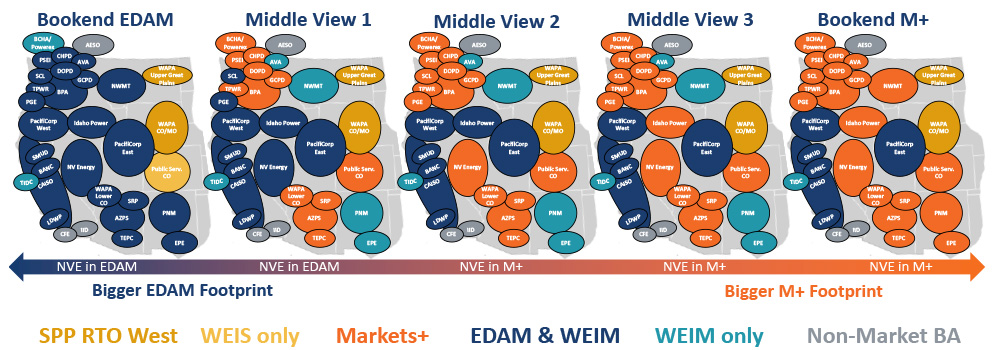The Securities and Exchange Commission voted 3-2 on March 6 to approve new rules that will require only very large companies to disclose some of the greenhouse gas emissions they generate. The catch is that disclosure will be required only if the emissions are “material,” that is, information investors need to make informed decisions about buying or selling the company’s stock.
This and other provisions in the final rules represent a major rollback from the more rigorous proposed rule the commission released almost two years ago, which would have required all publicly traded U.S. companies to report the full range of emissions generated by their operations and supply chains.
According to the SEC, the rule proposed in March of 2022 would have required an estimated 7,000 publicly traded U.S. companies and 900 foreign companies to report on Scope 1 and 2 emissions from their direct operations and energy use, respectively, and on indirect Scope 3 emissions from their supply chains.
Emission reporting requirements in the final rule have been whittled down, depending on company size, determined by the amount of their “public float” or the amount of stock held by public investors. Small and medium-sized companies, with less than $75 million in publicly held stock, are exempt from any emission reporting.
Very large companies, with more than $700 million in publicly held stock ― called large-accelerated filers (LAFs) ― will have to report their material Scope 1 and 2 emissions, as will companies classified as accelerated filers (AFs) with $560 million in publicly held stock.
In another major change, the new rules set up a phased-in reporting schedule, with LAFs not required to start reporting emissions until their fiscal years beginning in 2026. Reporting for AFs is pushed back to fiscal years beginning in 2028.
A limited level of independent verification of emission reporting, called “assurance,” will not be required for LAFs until 2029 and for AFs until 2031.
The 2022 proposed rules would have begun reporting in the year following approval.
Speaking on background, an SEC spokesperson explained the rollback as the result of the large number of comments the SEC received raising concerns about the cost of Scope 3 reporting and arguing that at present, methods of determining supply chain emissions would not provide reliable disclosure.
Corporate reporting requirements on climate-related risks — such as the financial impacts of extreme weather events or a company’s own climate-related targets or goals — also have been eased, according to the SEC.
Instead of requiring companies to disclose the impact of extreme weather events on specific line items in their financial statements filed with the SEC, the new rules call for financial statements to include only “notes” on capital costs, other expenditures and losses due to extreme weather.
Instead of requiring detailed information on a company’s climate-related targets and goals — scope, timelines, yearly progress — reporting on climate targets and goals will depend on whether they have “material” impacts on a company’s business strategies, operational results and financial condition.
Couched in financial jargon, the rule’s ongoing references to material impacts can appear like so many loopholes. For example, climate-related risks must be reported only if they “have had or are reasonably likely to have a material impact” on a company’s business strategy, operational results or financial condition. Whether such impacts are material could depend on a company’s own analysis of relevant “facts and circumstances.”
But SEC Chair Gary Gensler said materiality is a standard widely used in financial markets and reporting, backed by long-standing Supreme Court decisions. Information is deemed material if it would be likely to alter the investment or voting decisions of a “reasonable investor.”
He sees the rule’s grounding in materiality as a key point for its validity and legality, and an argument in its defense.
A 50-year History of Disclosures
The SEC has been requiring various levels of environmental disclosures for 50 years, most recently in 2010 when the commission issued guidelines for compliance on the issue, according to a commission fact sheet. The proposed and final rules are described as a continuation of SEC’s efforts “to respond to investor need for more consistent, comparable and reliable information about the financial effects of climate-related risks on [companies’] business” and how companies are managing that risk.
The release of the proposed rules on March 21, 2022, triggered an outpouring of comments, which required the SEC to extend the comment period once and then reopen it after a technical glitch resulted in comments submitted online not being received. More than 24,000 comments were received, including a last-minute flurry of 8,100 comments in the 72 hours preceding the commission’s meeting, Gensler reported during a post-meeting press call.
In his opening remarks at the meeting, Gensler noted that 90% of companies in the Russell 1000 “are publicly providing climate-related information,” and close to 60% also are providing public information on their GHG emissions. The Russell 1000 is a Seattle-based stock index covering 1,000 of the largest companies in the United State.
However, these disclosures often are made in corporate sustainability reports, not standard SEC filings, Gensler said. Integrating climate-risk information into SEC filings “will help make them more reliable. There are standard controls and procedures for filings, unlike for sustainability reports.”
Gensler also stressed that the SEC and all its rules are “merit-neutral,” and in this case, “that means we’re neutral about climate,” he said during the press call. “You can use this disclosure … to sell something that’s a green asset or buy it.
“We’re agnostic with regard to climate risk. We’re also agnostic on how companies manage climate risk,” he said. “We’re not agnostic about disclosure of material risk.”
Reflecting that neutrality, the 886-page final rule carefully avoids even mentioning climate change, referring throughout to “climate-related risk.”
The Split Vote
But the 3-2 vote signaled a clear ideological split on the commission, with Commissioners Caroline Crenshaw and Jaime Lizárraga joining Gensler with votes to approve, and Commissioners Hester Peirce and Mark Uyeda in opposition.
Peirce slammed the final rule as fundamentally flawed due to “its insistence that climate issues deserve special treatment and disproportionate space in commission disclosures and managers’ and directors’ brain space, because the commission fails to justify that disparate treatment.
“The rules’ anticipated benefits do not outweigh the costs,” she said. “Proponents of a commission climate rule hope that it will yield more accurate, comparable and complete climate disclosures. If we do not look at it too closely, the final rule may appear to fulfill these hopes, but a closer inspection brings us crashing back to the reality that many climate disclosures are high-price guesses about the present and future.”
Peirce also said the changes in the final rule were so substantive the commission should have reproposed it and once again gathered public comment.
Uyeda was equally critical, arguing that the rule represents regulatory overreach and “is the culmination of efforts by various interests to hijack and use the federal securities laws for climate related goals. In doing so, they have created a roadmap for others to abuse the commission’s disclosure regime to achieve their own political and social goals. …
“The result is using disclosure not as a tool to aid investors but to bypass Congress to achieve political and social change without the corresponding accountability to the electorate,” he said. “The commission is a securities regulator without statutory authority or expertise to address political and social issues.”
Arguing that the rule’s requirements for climate-risk disclosure are without precedent in the SEC’s previous disclosure requirements, Uyeda invoked the recent Supreme Court decision in West Virginia v. EPA and its “major question” provision that “an agency must cite something more than merely plausible textual basis for its action.
“The agency must instead point to clear congressional authorization for the power it claims, and the commission has not done so for this rulemaking.”
Crenshaw countered, “The commission has clear authority under the Securities Act and the Exchange Act to require disclosures that are in the public interest and for the protection of investors, as today’s rule is. This well-established authority has been consistently relied upon and affirmed and reaffirmed across dozens of disclosure rule makings over multiple decades. …
“Our public company disclosure regime is meant to be updated as markets innovate and investor demand changes,’ she said. “SEC rules have consistently required disclosure of risks even when the metrics related to those risks are labeled by some as not strictly financial, such as the greenhouse gas emissions.”
While voting for the rule, Crenshaw called its rollbacks on emission and other climate-related risk reporting “a missed opportunity. It remains my great hope that a future commission will rise to the occasion and enact more fulsome disclosure requirements in furtherance of our mandate and investor demand.”
Reactions
Immediate reactions to the SEC’s approval of the rule included environmental and business groups both raising the possibility of legal challenges.
The Sierra Club said it was “considering challenging the SEC’s arbitrary removal of key provisions from the final rule, while also taking action to defend the SEC’s authority to implement such a rule.”
Tom Quaadman, executive vice president for capital markets competitiveness at the U.S. Chamber of Commerce, noted the organization previously “raised significant concerns about the scope, breadth and legality of the SEC’s climate disclosure efforts. … While it appears that some of the most onerous provisions of the initial proposed rule have been removed, this remains a novel and complicated rule that will likely have significant impact on businesses and their investors.
“The Chamber will continue to use all the tools at our disposal, including litigation if necessary, to prevent government overreach and preserve a competitive capital market system,” he said.
But most early reactions echoed Crenshaw, praising the rule as a good first step but calling out the rollback on Scope 3 emissions and other disclosure requirements as major red flags.
“Climate risk is financial risk. This is a sensible rule to protect investors.” said Elizabeth Derbes, director of financial regulation and climate risk for the Natural Resources Defense Council. “What’s wrong with this rule is that it needs to do much more. Investors have been pressing for mandatory disclosure of greenhouse gas emissions, and the agency needs to give them a fuller picture of companies’ risk exposure.”
“For most companies and financial institutions, indirect emissions throughout a company’s value chain represent the largest source of a company’s transition risk,” said Mindy Lubber, president and CEO of Ceres, a nonprofit focused on sustainable finance. “While we are disappointed the rule does not include key provisions from [the SEC’s] 2022 proposal, including the mandate of the disclosure of Scope 3 emissions, investor demand for the disclosure of Scope 3 emissions continues to grow and many companies will be required to disclose this data in other jurisdictions,”
Sen. Sheldon Whitehouse (D-R.I.), chair of the Senate Finance Committee, was typically blunt. “While better than no rule at all, it is unfortunate that the SEC and other regulators continue to shy away from finalizing robust rules that would better protect investors, the economy, and the planet,” he said.

